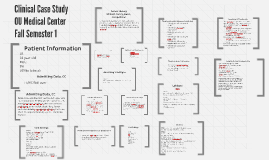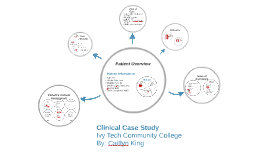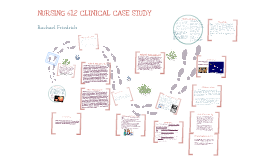Clinical Case Study
Transcript: Evidence-based practice guidelines for instructing individuals with neurogenic memory impairments: What have we learned in the past 20 years? Clinical Case Study Level Ia-ANCDS systematic review "Now I'm not missing everything on my calendar" "There's a new me!" Takeaway . . . Efficacy for metacognitive strategy instruction in middle-age adults with TBI Functional goals Self-monitor performance Level IIa K and the ICF Ehlhardt, L. A., Sohlberg, M. M., Kennedy, M., Coelho, C., Ylvisaker, M., Turkstra, L., & Yorkston, K. (2008). Evidence- based practice guidelines for instructing individuals with neurogenic memory impairments: What have we learned in the past 20 years? Neuropsychological Rehabilitation; an International Journal, 18(3), 300-342. doi:10.1080/09602010701733190 Kennedy, M. T., Coelho, C., Turkstra, L., Ylvisaker, M., Moore Sohlberg, M., Yorkston, K., Chiou, H. H., Kan, P. (2008). Intervention for executive functions after traumatic brain injury: A systematic review, meta- analysis and clinical recommendations. Neuropsychological Rehabilitation; an International Journal, 18(3), 257-299. doi:10.1080/09602010701748644 Kim, Y., Yoo, W., Ko, M., Park, C., Kim, S. T., & Na, D. L. (2009). Plasticity of the attentional network after brain injury and cognitive rehabilitation. Neurorehabilitation and Neural Repair, 23(5), 468-477. doi:http://dx.doi.org.weblib.lib.umt.edu:8080/10.1177/1545968308328728 Sohlberg, M. M., Avery, J., Kennedy, M., Ylvisaker, M., Coelho, C., Turkstra, L., & Yorkston, K. (2003). Practice guidelines for direct attention training. Journal of Medical Speech-Language Pathology, 11(3), xix-xxxix. Sohlberg, M. M & Mateer, C. A. (2010). Attention Process Training: A direct attention training program for persons with acquired brain injury. Youngsville, NC: Lash & Associates Publishing/Training Inc. Dani Perry CSD 675 Spring 2016 Attention Training + Strategy Instruction Computer-based Continuous self-reflection Target Population: acquired brain injury External Evidence Intervention for executive functions after traumatic brain injury: A systematic review, meta-analysis, and clinical recommendations Metacognitive Strategy Instruction Plasticity of the attentional network after brain injury and cognitive rehabilitation PMH: Epileptic seizures and pyogenic brain abscesses Impairment: Moderate cognitive-linguistic disorder -Moderate executive attention -Moderate prospective memory Activity Limitations: Trouble completing household/vocational duties, managing finances, staying focused w/o distractions Participation restrictions: Grocery shopping independently, engaging in conversations w/o becoming "lost," must walk everywhere-cannot drive Breaking complex tasks into steps Game face! Blocking internal/external distractions (Kennedy et al., 2008) Data Collection Results Takeaway . . . Plasticity of the neural networks Redistribution of attentional network resources Effortfull processing increases cognitive flexibility and generalization Aware of need for compensatory strategies Subjective evidence for redistribution of executive attention network (Kim et al., 2009) Level Ia Snapshot . . . Attention Process Training, 3rd Edition P: 42-year-old female with moderate cognitive-linguistic disorder secondary to amygdalohippocampectomy I: Attention Process Training with instruction in cognitive compensatory strategies C: Traditional cognitive rehabilitation therapy O: Increased cognitive functioning for IADLs Clinical Question References Implications Attention Process Training Test Level of Difficulty Accuracy Focus (Ehlhardt et al., 2008) Takeaway . . . Systematic Instruction Errorless learning + vanishing cues Intense/dispersed practice Effective for multiple populations

















